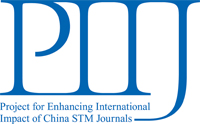Objective
To explore the significance of the combination of factor analysis and systematic cluster analysis in classification of traditional Chinese medical syndromes in patients with posthepatitic cirrhosis, and to provide a scientific basis for the criterion of the classification.
Methods
We designed a clinical questionnaire according to the clinical characteristics and the demands of traditional Chinese medical information collection for patients with posthepatitic cirrhosis. By means of clinical epidemiological research, with the four diagnosis methods for clinical information collection of traditional Chinese medicine, symptoms, physical signs, tongue conditions and pulse conditions in 310 patients with posthepatitic cirrhosis were collected, and the characteristics of traditional Chinese medical syndromes in these patients were explored with statistical methods, such as factor analysis, varimax and systematic cluster analysis.
Results
Analyzed by factor analysis and systematic cluster analysis with SPSS 11.0, the traditional Chinese medical syndromes in 287 of the 310 cases (92.58%) of posthepatitic cirrhosis could be classified. The syndromes could be divided into 7 categories, which were internal accumulation of damp-heat (55 cases), insufficiency of the spleen with overabundance of dampness (74 cases), accumulation of blood stasis plus deficiency of liver-yin and kidney-yin (73 cases), accumulation of blood stasis plus deficiency of both blood and qi (40 cases), deficiency of both blood and qi (16 cases), deficiency of yin and blood heat (6 cases) and stagnation of the liver-qi and deficiency of the spleen (23 cases). The traditional Chinese medical syndromes in the other 23 cases could not be classified.
Conclusions
The clinical information collected with the four diagnostic methods of traditional Chinese medicine can be classified into different categories with the factor analysis and systematic cluster analysis. The factor analysis and systematic cluster analysis can reveal the characteristics and regularity of traditional Chinese medical syndromes in patients with posthepatitic cirrhosis in a way, and have value in researching the syndromes of traditional Chinese medicine.
 Table of Content
Table of Content














